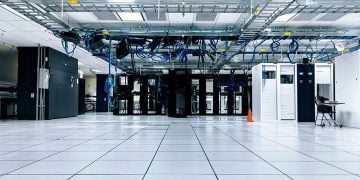SaaS Security cannot be improved without continuous monitoring, but that’s not all you need. At the beginning of the year, the White House warned all businesses to be on high alert against cyberattacks, which sounded alarm bells for many companies. Today’s sweeping warnings are unusual because they usually target government agencies or critical infrastructure companies.
All organizations should see this alert as an opportunity to review and, if necessary, improve their security. Security for software-as-a-service (SaaS) applications is often a blind spot, so pay extra attention to this. SaaS applications are ubiquitous, configurable, and constantly updated, leaving many organizations more vulnerable to attacks if they are not closely monitored for security breaches or changes.
What Is SaaS Security?
The vast majority of organizations use cloud environments and many have multi-cloud implementations, with the average enterprise leveraging services from five cloud providers. Cloud computing is understandably popular, but it also poses a number of security threats including compliance issues, breaches of contracts, non-secured APIs, and misconfigurations.
Software-as-a-Service (SaaS) environments are a particularly attractive target for cybercriminals because they tend to store a large variety and amount of sensitive data, including payment card details and personally identifiable information. Thus, it is crucial for companies to prioritize SaaS security.
Continuous monitoring is the key to continually adapting to SaaS changes, but it’s not what a better understanding of SaaS security is all about. Follow these seven steps to implement improved security measures that can help organizations minimize security risks:
1. SaaS Security: Closing critical configuration gaps
There are about 55% of organizations with sensitive data exposed due to misconfiguration. Despite their high configurability, SaaS applications can also become fatal disadvantages if they are not closely monitored. In order to better understand SaaS platform configuration, start with platforms with the most sensitive data and the most users. Close these configuration gaps by consulting Cloud Security Alliance best practices and other experts.
2. SaaS Security: Disable legacy authentication methods and protocols
Most hijacked logins do not support multi-factor authentication (MFA) and are instead hijacked via legacy authentication. Even with MFA enabled on the directory, some criminals can use legacy protocols to authenticate and bypass MFA. The most reliable way to protect your environment from malicious authentication requests made by legacy protocols is to block these attempts entirely.
3. Enforce higher security authentication requirements
By using MFA, the probability of account compromise can be reduced by 99.9%.
4. Analyze and monitor conditional access rules
Attackers often modify conditional access rules to open access rights further or implement unusual rules. Because these rules can be nested and complex, it is critical to validate them and monitor them continuously. All changes and IP block exceptions should be noted.
5. Evaluate third-party access
Third-party integrations and applications are often installed with high-level privileges and can serve as a conduit for horizontal privilege escalation to other SaaS systems. It should verify that third-party access and applications have been reviewed, approved, and are being actively used. In order to reduce the risks associated with third parties, third-party application permissions and data access rights should be granted in accordance with the principle of least privilege, and the access rights should be revoked immediately when they are no longer needed.
6. Identify public and anonymous data access rights
With the proliferation of ransomware attacks, and the rapid spread of toolsets to execute attacks, least-privilege access provides better protection. Data access modeling and third-party application analysis can help identify public internet-facing exposure points to help better protect all datasets.
7. Monitor abnormal behavior of users
Pay attention to the distribution of passwords and the number of incorrect passwords, and monitor threat intelligence feeds for accounts that have been hijacked. The sooner anomalous behavior is detected, the faster the breach can be responded to and prevented. SaaS applications perform business-critical functions in many organizations, so SaaS security should receive the same attention as security measures for other technologies. Continuously monitoring the SaaS ecosystem, quickly resolving misconfigurations, and keeping tabs on third-party access to the system can help keep your data secure and your business running smoothly.



























